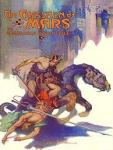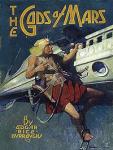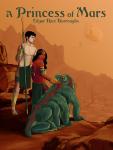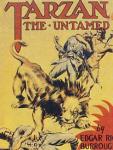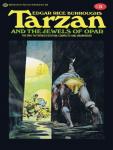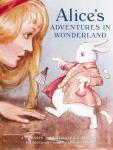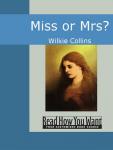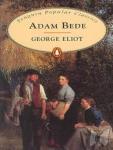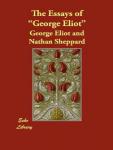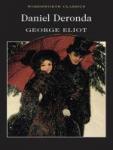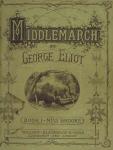Romola
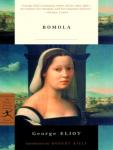
Florence, 1492: Christopher Columbus has sailed towards the New World, and Florence has just mourned the death of its legendary leader, Lorenzo de' Medici. In this setting, a Florentine trader meets a shipwrecked stranger, who introduces himself as Tito Melema, a young Italianate-Greek scholar. Tito becomes acquainted with several other Florentines, including Nello the barber and a young girl named Tessa. He is also introduced to a blind scholar named Bardo de' Bardi, and his daughter Romola. As Tito becomes settled in Florence, assisting Bardo with classical studies, he falls in love with Romola. However, Tessa falls in love with Tito, and the two are "married" in a mock ceremony.Tito learns from Fra Luca, a Dominican monk, that his adoptive father has been forced into slavery and is asking for assistance. Tito introspects, comparing filial duty to his new ambitions in Florence, and decides that it would be futile to attempt to rescue his adoptive father. This paves the way for Romola and Tito to marry. Fra Luca shortly thereafter falls ill and before his death he speaks to his estranged sister, Romola. Ignorant of Romola's plans, Fra Luca warns her of a vision foretelling a marriage between her and a mysterious stranger who will bring pain to her and her father. After Fra Luca's death, Tito dismisses the warning and advises Romola to trust him. Tito and Romola become betrothed at the end of Carnival, to be married at Easter after Tito returns from a visit to Rome.The novel then skips ahead to November 1494, more than eighteen months after the marriage. In that time, the French-Italian Wars have seen Florence enter uneasy times. Piero de' Medici, successor to the lordship of Florence, has been exiled from the city for his ignominious surrender to the invading French king, Charles VIII. Girolamo Savonarola preaches to Florentines about ridding the Church and the city of scourge and corruption. In this setting, Tito, now a valued member of Florentine society, participates in the reception for the French invaders. Tito encounters an escaped prisoner, who turns out to be his adopted father, Baldassare. Panicked and somewhat ashamed of his earlier inaction, Tito denies knowing the escaped prisoner and calls him a madman. Baldassare escapes into the Duomo, where he swears revenge on his unfilial adoptive son. Growing ever more fearful, Tito plans to leave Florence. To do this, he betrays his late father-in-law, Bardo, who died some months earlier, by selling the late scholar's library. This reveals to Romola the true nature of her husband's character. She secretly leaves Tito and Florence, but is persuaded by Savonarola to return to fulfil her obligations to her marriage and her fellow Florentines. Nevertheless, the love between Romola and Tito has gone.Again the action of the novel moves forward, from Christmas 1494 to October 1496. In that time, Florence has endured political upheaval, warfare and famine. Religious fervour has swept through Florence under the leadership of Savonarola, culminating in the Bonfire of the Vanities. The League of Venice has declared war on the French king and his Italian ally, Florence. Starvation and disease run rampant through the city. Romola, now a supporter of Savonarola, helps the poor and sick where she can. Meanwhile, Tito is embroiled in a complex game of political manoeuvring and duplicitous allegiances in the new Florentine government. Mirroring this, he has escaped attempts by Baldassare to both kill and expose him, and maintains a secret marriage to Tessa, with whom he has fathered two children. Romola becomes defiant of Tito, and the two manoeuvre to thwart each other's plans. Romola meets an enfeebled Baldassare, who reveals Tito's past and leads her to Tessa.Political turmoil erupts in Florence. Five supporters of the Medici family are sentenced to death, including Romola's godfather, Bernardo del Nero. She learns that Tito has played a role in their arrest. Romola pleads with Savonarola to intervene, but he refuses. Romola's faith in Savonarola and Florence is shaken, and once again she leaves the city. Meanwhile, Florence is under papal pressure to expel Savonarola. His arrest is effected by rioters, who then turn their attention to several of the city's political elite. Tito becomes a target of the rioters, but he escapes the mob by diving into the Arno River. However, upon leaving the river, Tito is killed by Baldassare.Romola makes her way to the coast. Emulating Gostanza in Boccacio's The Decameron (V, 2), she drifts out to sea in a small boat to die. However, the boat takes her to a small village affected by the Plague, and she helps the survivors. Romola's experience gives her a new purpose in life and she returns to Florence. Savonarola is tried for heresy and burned at the stake, but for Romola his influence remains inspiring. Romola takes care of Tessa and her two children, with the help of her older cousin. The story ends with Romola imparting advice to Tessa's son, based on her own experiences and the influences in her life.
Contents
- Part one Proem
- Part one Chapter 1 - The Shipwrecked Stranger
- Part one Chapter 2 - Breakfast for Love
- Part one Chapter 3 - The Barber's Shop
- Part one Chapter 4 - First Impressions
- Part one Chapter 5 - The Blind Scholar and His Daughter
- Part one Chapter 6 - Dawning Hopes
- Part one Chapter 7 - A Learned Squabble
- Part one Chapter 8 - A Face In The Crowd
- Part one Chapter 9 - A Man's Ransom

